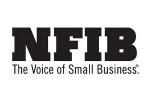WASHINGTON — Money is the lifeblood of a business, but can be difficult to come by when getting started or expanding a small- to mid-sized company. Potential borrowers can make themselves much more attractive to lending institutions by doing their homework and presenting a case where their plans make good business sense.
This was the message of Joseph W. Major, chair and CEO of The Victory Bank and Victory Bancorp, Inc. in Limerick, Pennsylvania, near Philadelphia. Major offered his counsel during a recent webinar — “Small Business Loans and Financing — A Banker’s Expert Advice” — sponsored by the National Federation of Independent Business (NFIB).
In Part 1 of this series, we looked at the importance of finding the right financial partner and the value of a proper business plan. In Part 2, we examined some of the most common types of loans when it comes to funding a start-up business or expanding an existing one. Today, we’ll conclude by delving into the process borrowers will navigate when seeking a loan, and the increasing role of technology in today’s lending industry.
The Lending Process
Major, whose Victory Bank is a smaller institution, believes that his customers can better get the service they need for their companies because they understand the pressures small-business owners face.
“We use an expression called ‘speed matters,’” he says. “We believe that, as a borrower, if we can give you a quick answer to your request, even if the answer is ‘no,’ it’s valuable to do it in a short period of time. In our case, a couple of weeks is our general goal. It depends on how busy we are — it can be a little longer or shorter.”
Major, who describes the process of getting a loan at many institutions as a “black box,” where the decision-making process is unclear to the potential borrower, believes that it should be made clear.
“The process goes like this,” he says. “The loan officer hopefully has a complete package put together. Sometimes, the loan officer will call you and say, ‘I know you think you gave me everything you needed, but I don’t have your 2022 tax returns,’ and you’ll say, ‘Oh, gee, my accountant hasn’t gotten those to me yet.’ You’ll get directed to go get them, because we can’t proceed until we have everything together.”
Once the information is in hand, the process can actually begin.
“Inside a shop like ours, we use a front-to-back software program that helps us guide a loan through the process, even as small as we are,” he says. “The package — with tax returns, statements, business plan, proposed loan terms and pricing — gets put into this system and sent to a credit underwriting department. We have a manager who’s an expert in commercial banking of all kinds, including real estate. It gets assigned to an underwriter, who reviews it.”
It’s at this point when the decisions are made.
“While the software helps us, in a small bank like ours, it’s still a customized process,” Major says. “We’re going to look at things like cash flow — that’s No. 1. Is there cash flow coming out of this transaction? Let’s say you want to buy a big, new piece of equipment that’s going to cost you half a million dollars for your small business. We’ll look at how much the monthly payment will be, your projected sales increase, margins and so on. We calculate everything, look at industry averages, and compare with data from other businesses in the same industry to see if the proposed numbers make sense. We get all the answers back, and then we come to a conclusion.”
Depending on the size of the loan, there are levels of approval authority at a financial institution.
“If the loan is small enough, the banker you’re dealing with will have authority to sign that loan themselves,” Major says. “In our case, most of our experienced lending officers can loan about $250,000 on their own signature. If it’s more than that, it requires the banker plus their boss. As loans get bigger, we need multiple signatures, and if they’re big enough, they have to go to our full board. Our board meets once a month, typically, but we have meetings every two weeks for loan approvals that need full board review.”
The Evolution of Business Lending
Major knows that the financing options available to today’s business owners are multiplying, and that technology will have a huge impact.
“You can go to some of these online services like Cabbage and others,” he says, “where you can apply for $25,000, $50,000 or $100,000. You still have to answer questions and provide verification, but those services are automated, and with artificial intelligence, it’s becoming more and more common that people will never even talk to a banker. They’ll just do something online, and they’ll get a substantial amount of money.”
Major believes, however, that there are some drawbacks to this type of lending.
“They won’t get a million-dollar loan through these,” he says, “and most of the automated services, because they’re designed to be fast and don’t require the same sort of credit support like personal guarantees, usually you’re going to pay a much higher interest rate. But that is evolving, and I expect that to continue to evolve.”
The Personal Touch
While there may be more financial products available in the future, there’s still going to be a need for face-to-face interactions when it comes to loans, Major says.
“What we do — which is to know you inside and out, visit your business and have everything very customized and personal — I think that’s going to become less and less common,” he says. “I think the small-business borrower is going to have a lot more options to pick from. I would just say that they’re not bad options — sometimes they’re great — but you’ve got to be careful because you’re not talking to a human being. You can’t ask any questions. If you don’t qualify, you don’t know what to do, and it’s likely that you can end up paying a lot more to get the same money. If you dealt with a local bank and let that banker do their job, you might have been better off.”
Making a personal case for a loan is the strength of doing business in your community, Major says, even given the revolution coming in the industry.
“It’s good and bad,” he says. “It’s good because you can get stuff quick, fast and cheap. It’s bad because with everything being automated, the decision’s not being made by a human being anymore. Your excuses, your justification, your rationalization for why your business failed before and how you’re better and you fixed it — the software is not going to care about that. They’re just going to say ‘no.’”
Because, in the final analysis, all small-business decisions are personal, Major believe that owners should make a partner of their local financial institution.
“I think when you’re making hard decisions about your business, about your future and your livelihood, you want to be able to talk to somebody who can give you good advice so that you can make the right decision, and not just the one that the computer will approve. That’s where smaller banking companies still really add a lot of value to the process. If we do our jobs right, we treat you like family and we help you make the right decisions.”
For Part 1, click HERE. For Part 2, click HERE.
Have a question or comment? E-mail our editor Dave Davis at [email protected].


























































